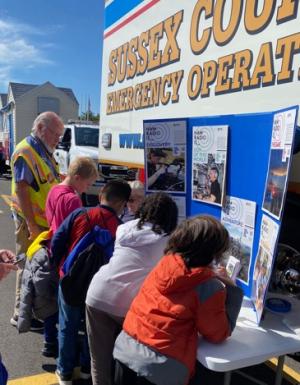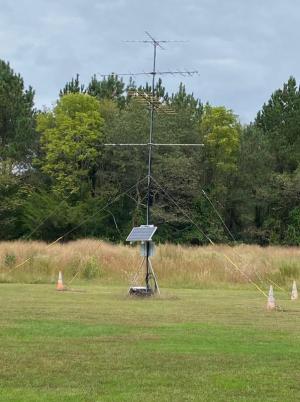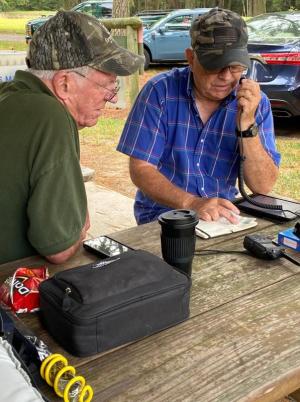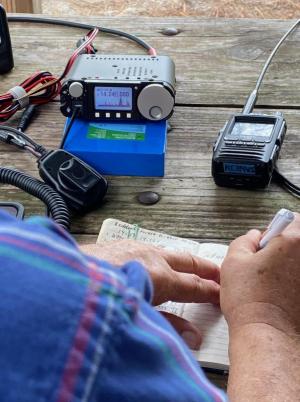Ham radio operators take part in local events
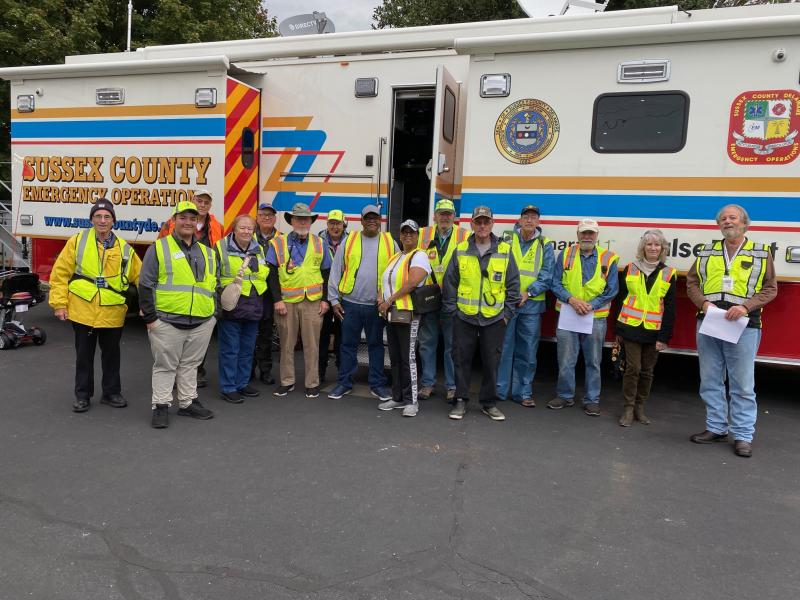
Is ham radio still a thing?
Amateur radio, aka ham radio, has been around for more than 100 years. While it started as a way regular citizens could experiment with Morse Code communication, it soon became wireless voice communication. With modern technologies like cellphones and the internet, it would seem there is no need for radio communication. But, ask any one of the almost 2,000 Federal Communications Commission-licensed ham radio operators in Delaware, and they will tell you it's more than a hobby. For many, it is a part of everyday life.
October was especially busy for local ham radio operators. A group of hams from the Nanticoke Amateur Radio Club set up their equipment Oct. 7 at Redden State Forest just south of Georgetown. The purpose of the event was to give the operators experience in setting up an operational field station completely off the grid. They spent several hours in Parks on the Air conversations with other hams, many of whom were located in a variety of parks and public lands around the globe.
About 300 feet away from the POTA group was an automatic radio tracking antenna used to monitor migratory birds. The research tracking devices use a designated frequency range on the radio wave spectrum, and there is no interference from the ham radio operations. A forestry officer said there are a number of migratory tracking antennas in the research program, but the Redden Forest site is the only one in Delaware.
The Sussex County Emergency Operations Complex held its annual 9-1-1 Awareness Day Oct. 12, an annual exposition to educate the community about emergency services. Visitors, including many children, were given a tour of the emergency complex and spent time at outdoor displays including a variety of fire, ambulance, forestry and safety demonstrations as well as the county Mobile Command Unit. The MCU is a mobile 911 facility that can be deployed on standby to provide emergency communications to and from large public gatherings or disaster sites. The Sussex Auxiliary Communications group regularly assists the mobile facility and was on hand for the event. At public events such as area fireworks, parades and the recent Apple-Scrapple Festival in Bridgeville where the MCU sets up, AuxComm operators use handheld radios and roam the event to provide a way to immediately alert emergency personnel if they are needed.
During the Oct. 14 Apple-Scrapple Festival, 20 ham radio AuxComm operators from Kent and Sussex counties worked under the command of the EOC to assist visitors and provide information to the MCU. The hams could give directions, communicate with the MCU about families that got separated or summon help for people needing medical assistance.
The weekend of October 21 Licensed operators from Kent and Sussex counties conducted the annual Simulated Emergency Test the weekend of Oct. 21. Since emergencies often occur at the most inopportune times, no advance information is provided about the activity. Many operators keep a go-kit and are prepared to travel when and where needed with their own radio equipment and supplies.
In addition to Morse Code and voice communications, new digital modes and technologies for modern ham radio are being developed. Ham operators can now send text messages, email, weather reports and location reports without the internet, using only radio waves. These technologies allow ham radio to be used during natural disasters or other emergencies where more widely used methods of communication may not be available. Because of the nature of a ham radio station, it can be set up anywhere, requires no commercial power, is relatively inexpensive, and if one station fails, the rest of the system continues without any interruption. So, the answer is: Yes, ham radio is still a thing.
Anyone interested in learning more about ham radio can go to sussexradio.com or email sussexamateurradio@gmail.com.














